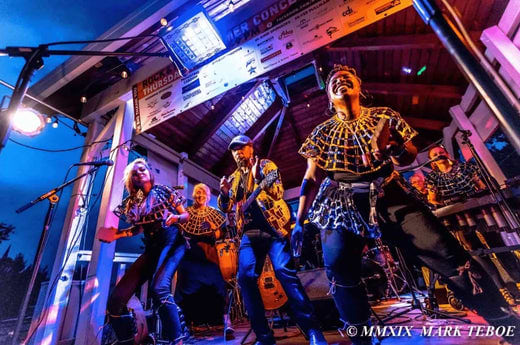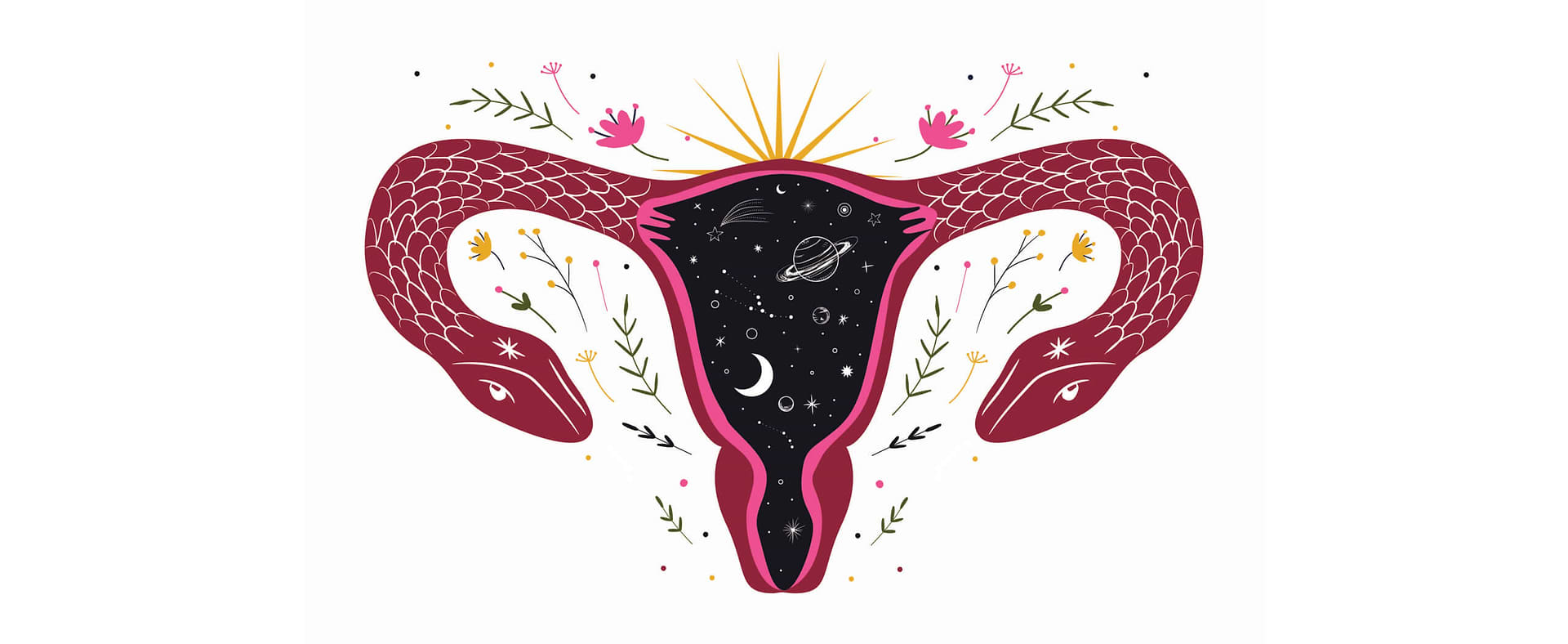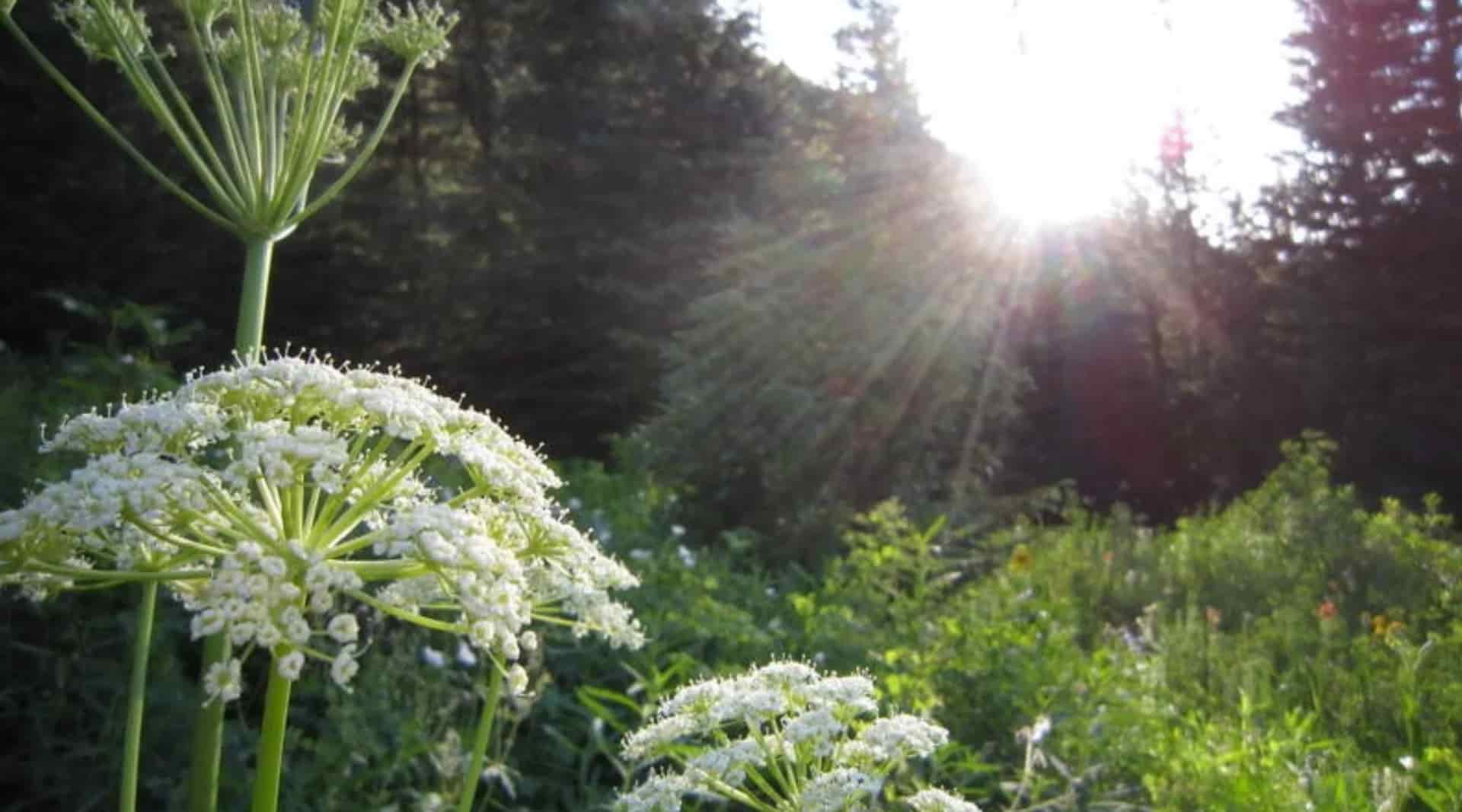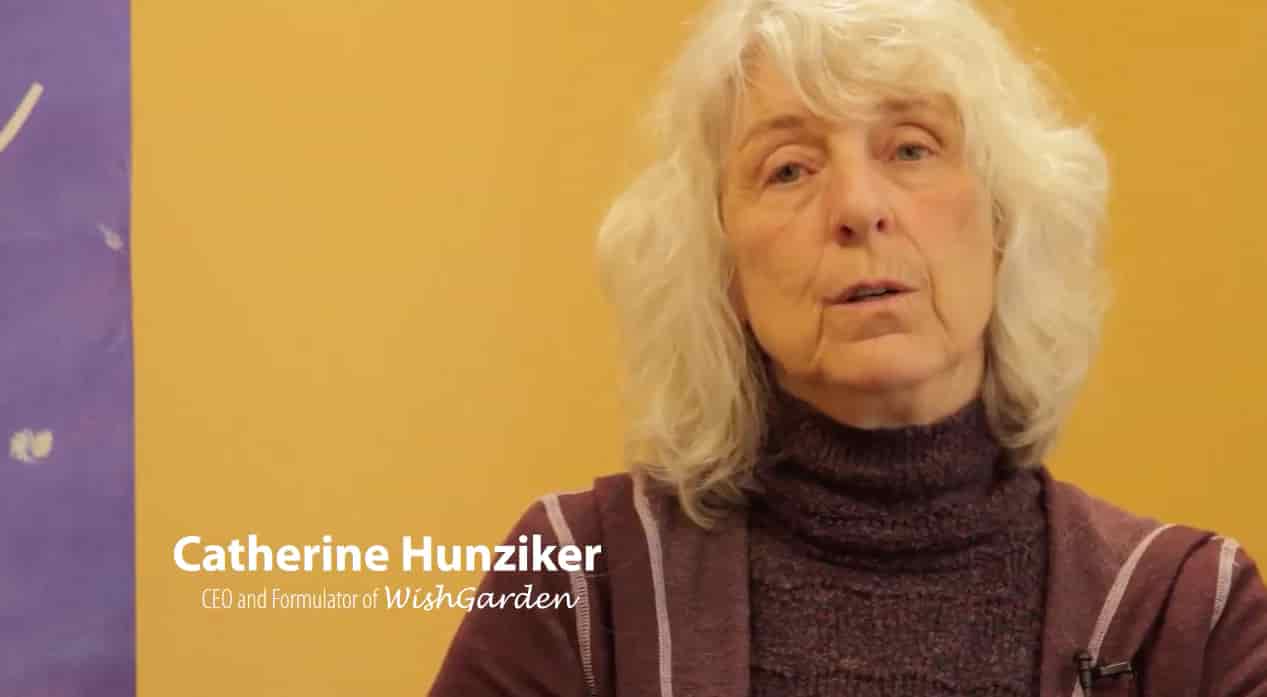When WishGarden Herbs' formulator and president, Catherine Hunziker, purchased the company from a colleague in 1987, the business literally fit inside her hallway closet. Now, 35 years later, WishGarden has a national reach and continues to grow in both size and mission. In this interview, Catherine shares her memories of WishGarden's past and her vision for its future.
Q. How did you become interested in herbalism?
I was in college during the flower-child era, which was all about getting back to nature. In the early 80s, I wanted to live somewhere peaches grew, so I moved down to the Ozarks and lived in a cabin there in a beautiful river valley. It was a part of the country where a lot of back-to-the-landers were living.
I was out for a walk early one morning when I came upon a meadow where wild turkeys and deer were grazing. As I stood there, I heard this funny sound — it was the buzzing of bees hovering around a bush that was in full bloom. In the middle of January! It turned out to be Witch Hazel, and I was just in awe, because to bloom at that time of year, the life force had to be incredible.
Shortly after that, I met a man in the community who was an herbalist. He grew herbs and made things with them to sell them at the local co-op. It was those two experiences that really got me interested in medicinal plants.
Q. How did you go from living in a cabin in the Ozarks to running an herbal company in Colorado?
I had been living in Colorado before I moved to Missouri, and when I moved back here, I continued my involvement in the midwifery movement. I had trained to be a midwife earlier on, and I was now teaching childbirth education when a midwife friend of mine told me that she wanted to move on from her herbal business, which she had purchased a few years earlier from its founder, another local midwife named Barbara Wishengrad.
At that time, state laws didn't allow midwives to prescribe pharmaceuticals, so they were one of the groups that turned back to herbalism during what we call the Herbal Renaissance of the 1970s and 80s. That's one of the things that makes our story a little different from a lot of other herb companies — our original focus was on using herbs for pregnancy, during and after labor. When you're working with mothers and newborn babies as a midwife, you need tools that are safe and body friendly but also effective.
I bought the company in 1987. Coming from the back-to-the-land movement and the midwifery community, I wanted to be part of creating a sustainable future and I wanted to do something that incorporated my interest in plants and herbalism.
I would call that WishGarden's first life cycle, when we were primarily selling to childbirth practitioners. I grew about 45 different species of herbs that I used in the formulas and made and shipped everything out of my garage. It was all mail order, and all the marketing was word of mouth. A lot of the original formulas that we created for the childbearing community are the same ones we still offer today!

Catherine with son, Sam, after home birth of Daughter, Anna (1979).
Q. How did you expand from primarily pregnancy and childbirth formulas to the broad product range you have now?
As my customers and their clients began using the products, I started getting a lot of requests for other formulas. "Could you make something for my child? Could you make something for my husband, or my brother, or my sister, or my friend?"
So, I started formulating for beyond pregnancy: immunity, stress, sleep — all the things that people need for general wellness. Kick-Ass Immune Activator and Deep Lung were both requests from a local naturopath, and Serious Cough was actually a request from the school my daughter, Anna, attended.
I also began selling at the Boulder Farmers' Market, where WishGarden was the first value-added booth that wasn't selling produce or flowers straight from the farm.

Catherine selling WishGarden formulas at the Boulder Farmers' Market in the early 1990s.
Q. You've come a long way from a one-woman booth at the farmers' market! How did that happen?
As the company began to grow, I was able to hire employees and move into a commercial space. Then, in the early 2000s, the Whole Foods and the Vitamin Cottage in Boulder, Colorado, were the first two stores to start selling our products in stores. At that point we still had handwritten labels on all the bottles!
I started learning how to navigate that industry, and that began our second life cycle, which was about becoming established in the natural products brick-and-mortar retail space. We started here in Colorado, then the stores began taking us into new markets across the Rocky Mountain region up to the Pacific Northwest and down into Texas and the South. We were still way too small to do any significant marketing, but we learned how to capitalize on that buzz by doing demos and giving out samples and eventually sending out educators to do trainings with staff and community members.
Q. What's next for you at WishGarden?
Our third life cycle, which I would say we're just beginning, is becoming a national brand through expanding our retail reach and focusing on eCommerce and marketing. As we've matured as a company, we've also been able to bring in more people, including my son, Sam, who is WishGarden's CEO, and my daughter, Anna, who is our Director of Customer Experience. That's given me the space to circle back around to what I've always been the most interested in, which is the plants themselves. Most of my personal goals have to do with setting up a community-supported Herbal Ag Hub to facilitate the growing of medicinal plants regionally and beyond and to educate more people about herbalism.
The first thing I'd like to do is create a home base for growing and processing herbs for commerce and home herbalism. It will also be an educational space to demonstrate good manufacturing practices (GMPs), such as how to dry herbs efficiently and economically and how to keep them clean so that they pass microbial tests. Over the past few years, we've started contracting with local farmers to source more of our herbs closer to home. We've always sourced herbs that are grown organically, sustainably, and ethically, but getting locally grown herbs from here in Colorado is relatively new for us, and a lot of these smaller local growers need help getting set up for that in a way that's affordable and scalable and that meets botanical herb regulations.
One of my other goals is to help support the viability of the regional food shed and farming community. It can be hard for farmers to survive, and I've always felt that adding medicinal plants — which you can generally sell for more per pound than other produce — might generate more income for farmers. For instance, right now, the vast majority of the Elderberry that we use in the United States comes from Eastern Europe, but it grows here just fine! I'd also like to help research how to grow more of our wild plants like Osha and Yerba Mansa in a sustainable way so that people can benefit from their amazing medicinal value without overharvesting them in the wild.
My fourth goal is a focus on regenerative soil use. Soil — not dirt, but living soil — is critical to save our planet from the climate crisis. So, even though it's not specifically about herbs, it's integral.
All of this relates back to what I would call our primary mission, which is helping people rediscover herbalism. As human beings, we evolved with herbs as our medicinal partners. When pharmaceuticals came along, they brought a lot to the table, but in the process, we lost sight of what herbs have to offer. And what they have to offer is quite a lot!

Catherine at Jack's Solar Garden researching agrivoltaics and medicinal plants.
Interviewer Valerie Gleaton is a professional writer and editor. She has a master's degree in journalism from the University of Colorado at Boulder, where she also earned a certificate in science and environmental reporting.
For educational purposes only. This information has not been evaluated by the Food and Drug Administration. This information is not intended to diagnose, treat, cure, or prevent any disease, or sell any product.
Recommended Products
Further Reading













